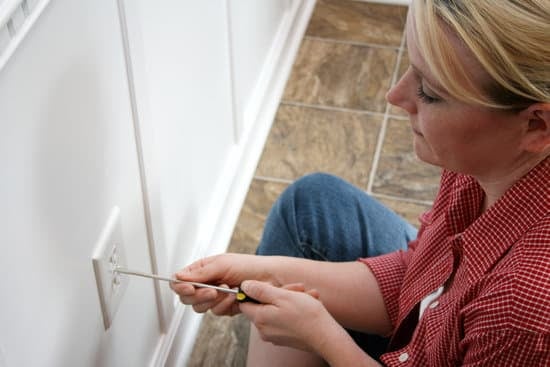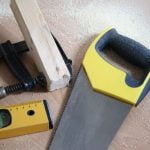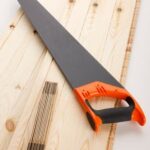Home improvement projects often require substantial financial investment, which may lead homeowners to explore different financing options. Two common avenues for funding home improvements are home improvement loans and mortgages. But can a home improvement loan be added to a mortgage? This article will delve into the possibility of combining these two types of loans and explore the benefits and drawbacks of doing so.
When it comes to making improvements to your home, there are various types of home improvement loans available, each with their own eligibility criteria and requirements. Understanding the options for securing funds for these projects is crucial for homeowners looking to enhance their living space.
Likewise, understanding mortgages is essential, as they are often used to finance the purchase of a new home or refinance an existing one. The process of obtaining a mortgage can be complex, with lenders considering several factors before approving a loan. It’s important for homeowners to have a clear understanding of this financial tool if they’re considering adding a home improvement loan to their mortgage.
Understanding Home Improvement Loans
Types of Home Improvement Loans
There are several types of home improvement loans available to homeowners, each with its own set of features and benefits. One common option is a home equity loan, which allows homeowners to borrow against the equity in their property.
Another popular choice is a home equity line of credit (HELOC), which functions similarly to a credit card but uses the home as collateral. Additionally, some lenders offer personal loans specifically for home improvement projects, which may be unsecured and based on the borrower’s creditworthiness.
Eligibility Criteria and Requirements
In order to obtain a home improvement loan, homeowners typically need to meet certain eligibility criteria and provide specific documentation. Lenders may consider factors such as credit score, income, employment history, and the amount of equity in the property when evaluating an application for a home improvement loan. Additionally, borrowers may need to provide estimates or invoices for the proposed renovation or improvement project in order to qualify for funding.
Benefits of Home Improvement Loans
Home improvement loans can provide homeowners with access to funds needed to make necessary renovations or upgrades to their property. By securing financing specifically for these projects, homeowners can avoid tapping into their savings or retirement accounts.
Additionally, depending on the type of loan selected, borrowers may benefit from competitive interest rates and flexible repayment terms that suit their financial situation. Overall, utilizing a home improvement loan can help homeowners maintain and even increase the value of their property while spreading out the cost over time.
Understanding Mortgages
When considering a home improvement project, homeowners often turn to mortgages as a potential source of financing. Understanding the different types of mortgages available is crucial in making an informed decision about how to fund home renovations.
Types of Mortgages
There are various types of mortgages, including fixed-rate mortgages and adjustable-rate mortgages. Fixed-rate mortgages offer a set interest rate for the entire term of the loan, providing stability for homeowners. On the other hand, adjustable-rate mortgages typically start with a lower interest rate that can fluctuate over time, potentially increasing the homeowner’s payments.
Obtaining a Mortgage
The process of obtaining a mortgage involves applying for a loan with a lender and undergoing a credit check and financial assessment. Lenders consider factors such as income, credit score, and debt-to-income ratio when evaluating mortgage applications. Additionally, borrowers may be required to make a down payment on the property to secure the mortgage. It’s important for homeowners to understand these requirements before pursuing a mortgage for home improvements.
Factors Considered by Lenders
Lenders take into account various factors when approving or denying mortgage applications. These include the borrower’s credit history, employment stability, and overall financial situation. Homeowners should carefully evaluate their financial standing and explore different mortgage options to determine which type of mortgage is most suitable for their home improvement needs.
Can a Home Improvement Loan Be Added to Mortgage?
Combining a home improvement loan with a mortgage is a common consideration for homeowners looking to make significant upgrades or renovations to their property. By adding the cost of the improvements to their mortgage, homeowners may be able to take advantage of lower interest rates and extended repayment terms. However, it’s important to understand the process and consider the potential pros and cons before making this financial decision.
One of the primary benefits of adding a home improvement loan to a mortgage is the potential for lower interest rates. Mortgages typically offer lower interest rates compared to other types of loans, so combining the two could result in overall savings for the homeowner. Additionally, by extending the repayment terms through a mortgage, homeowners may be able to spread out the cost of their renovations over a longer period, making it more manageable from a budgeting standpoint.
While there are clear advantages to combining a home improvement loan with a mortgage, there are also potential drawbacks that should be carefully considered. By adding the cost of renovations to an existing mortgage, homeowners are essentially increasing their level of debt and overall monthly payments. This could have long-term implications on their financial health and may impact their ability to qualify for additional financing in the future. Homeowners should carefully weigh these risks before proceeding with this option.
Benefits of Adding a Home Improvement Loan to Mortgage
Adding a home improvement loan to a mortgage can offer several benefits to homeowners. One of the main advantages is the potential for lower interest rates, as mortgage rates are generally lower than those for unsecured personal loans. By combining the two loans, homeowners may be able to secure a more favorable interest rate, ultimately saving them money over the life of the loan.
Another benefit of adding a home improvement loan to a mortgage is the possibility of extended repayment terms. Mortgages typically have longer repayment periods compared to other types of loans, which can result in lower monthly payments and make it easier for homeowners to manage their finances. This extended timeframe can be especially helpful for large-scale home improvement projects that require significant funding.
Furthermore, adding a home improvement loan to a mortgage can simplify the borrowing process for homeowners. Rather than managing separate loan accounts and making multiple payments each month, combining the two loans results in a single, consolidated payment. This streamlined approach can make it easier for homeowners to keep track of their finances and stay on top of their loan obligations.
| Benefit | Description |
|---|---|
| Lower Interest Rates | Combining loans may result in a more favorable interest rate, saving money over time |
| Extended Repayment Terms | Mortgage repayment periods are typically longer, resulting in lower monthly payments for larger home improvement projects |
| Simplified Borrowing Process | Consolidating loans into one payment makes it easier for homeowners to manage their finances and loan obligations |
Risks and Considerations
Exploring the potential risks and drawbacks of adding a home improvement loan to a mortgage, it’s important for homeowners to carefully consider their financial situation before making this decision. Here are some key factors to consider:
- Increased Total Debt: Adding a home improvement loan to a mortgage will increase the total debt owed by the homeowner. This could impact their overall financial stability and ability to qualify for future loans.
- Extended Repayment Period: Combining the two loans may result in a longer repayment period, which means that homeowners will be paying interest for a longer period of time, ultimately increasing the total cost of the loan.
- Risk of Foreclosure: By adding a home improvement loan to a mortgage, homeowners are putting their property at risk if they are unable to make the combined payments. This could potentially lead to foreclosure if they default on the loan.
Additionally, homeowners should also consider how adding a home improvement loan to their mortgage may impact their overall financial situation. It’s crucial to weigh the potential benefits against the risks involved and ensure that they are making an informed decision that aligns with their long-term financial goals.
Ultimately, while combining a home improvement loan with a mortgage can offer certain benefits, homeowners must carefully consider these risks and drawbacks before moving forward with this financing option. Consulting with a financial advisor or mortgage expert can provide valuable insights and guidance in making this important decision.
Alternatives to Adding a Home Improvement Loan to Mortgage
When considering home improvement projects, homeowners have a variety of financing options to choose from. While adding a home improvement loan to a mortgage is one option, there are alternatives that may better suit the homeowner’s financial needs and goals. Here are some alternatives to consider:
- Personal Loans: Personal loans are unsecured loans that can be used for various purposes, including home improvements. They typically have higher interest rates than home equity loans or HELOCs, but they do not require collateral.
- Home Equity Line of Credit (HELOC): A HELOC is a revolving line of credit that allows homeowners to borrow against the equity in their homes. It offers flexibility in borrowing and repaying funds and may have lower interest rates than personal loans.
- Credit Cards: Using credit cards for home improvement projects is an option for smaller scale renovations. However, it’s important to consider high-interest rates and potential impact on credit scores when using this financing method.
Each alternative comes with its own set of pros and cons, and it’s essential for homeowners to carefully evaluate their financial situation and goals before choosing the right financing option for their home improvement project.
Ultimately, the decision on how to finance a home improvement project will depend on factors such as the cost of the renovation, the homeowner’s credit score, existing mortgage terms, and long-term financial goals.
Tips for Choosing the Right Financing Option
In conclusion, the decision to add a home improvement loan to a mortgage is a significant financial choice that should be carefully considered. While there are benefits to combining the two loans, such as lower interest rates and simplified borrowing processes, there are also potential risks and drawbacks to take into account. It’s important for homeowners to weigh their options and consider their overall financial goals before making a decision.
Ultimately, choosing the right financing option comes down to individual circumstances and priorities. Factors such as interest rates, repayment terms, and the impact on one’s overall financial situation should all be carefully evaluated. Homeowners should also consider alternative financing options for home improvement projects, such as personal loans or home equity lines of credit, and weigh the pros and cons of each option before making a decision.
In addition, seeking guidance from financial experts or mortgage professionals can provide valuable insights and assistance in making an informed decision. By taking the time to thoroughly evaluate all financing options and considering their long-term implications, homeowners can make a well-informed choice that aligns with their specific needs and financial objectives.
Frequently Asked Questions
Can I Add to My Mortgage for Home Improvements?
Yes, you can add to your mortgage for home improvements through a cash-out refinance or a home equity loan. A cash-out refinance allows you to refinance your existing mortgage for a higher amount and receive the difference in cash, which can then be used for home improvements.
On the other hand, a home equity loan allows you to borrow against the equity in your home specifically for renovation purposes.
Can You Add a Loan to Your Mortgage?
Yes, it is possible to add a loan to your mortgage through a process called loan consolidation or debt consolidation. This involves refinancing your existing mortgage to include the additional loan amount, thus combining both debts into one mortgage payment. However, it’s important to carefully consider the terms and interest rates of both loans before making this decision.
Are Home Improvement Loans a Good Idea?
Whether home improvement loans are a good idea depends on individual circumstances such as the scope of the renovations, the interest rates available, and one’s financial situation. For some homeowners, taking out a specific loan for home improvements may offer better terms and lower costs than adding to their mortgage or acquiring an additional loan.
It’s essential to consider all options carefully and compare different financing solutions before making a decision.

I’m thrilled to have you here as a part of the Remodeling Top community. This is where my journey as an architect and remodeling enthusiast intersects with your passion for transforming houses into dream homes.





